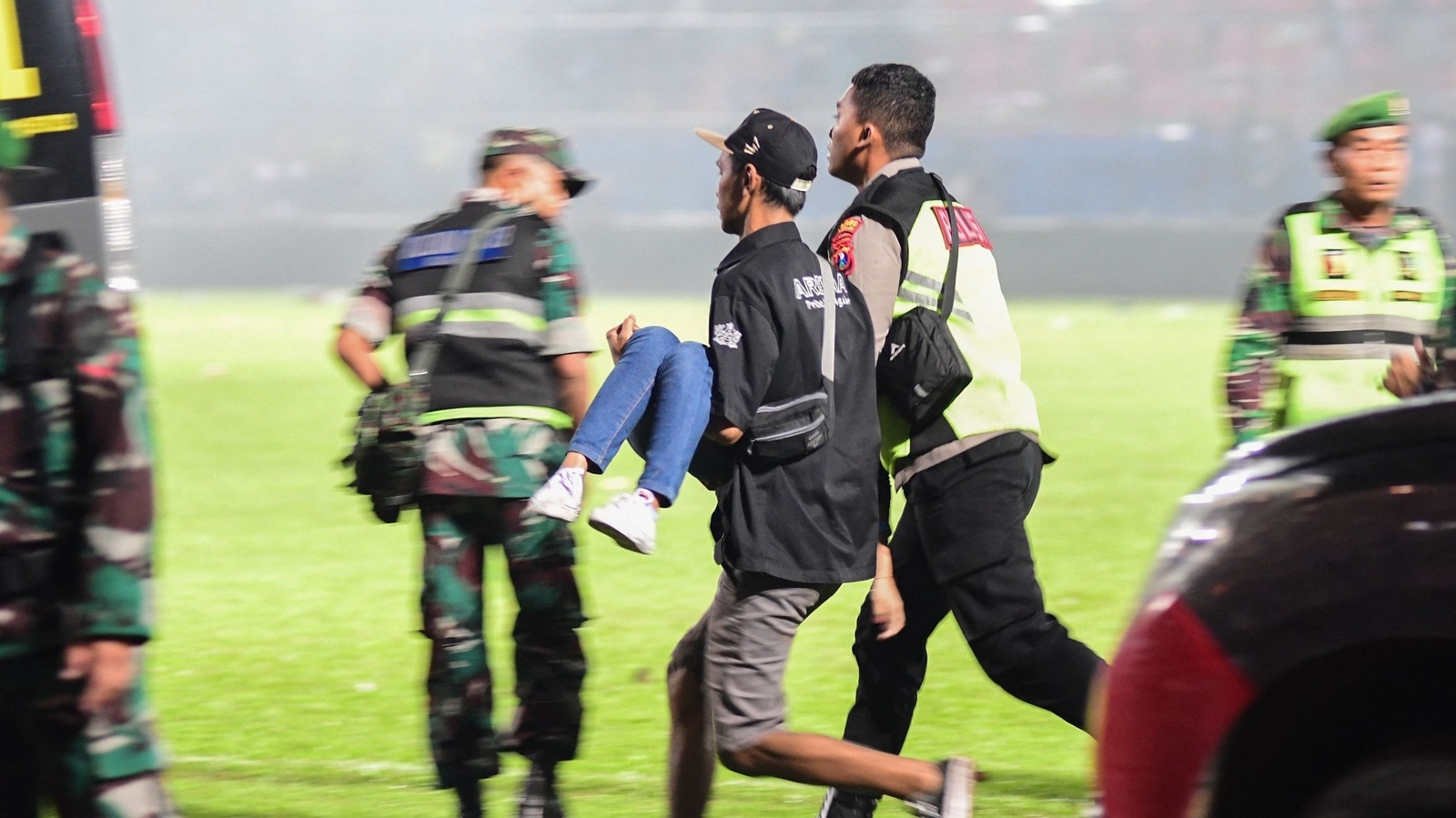Malang Stadium exit gates too small for escape: Indonesia police
The gates at the Indonesian soccer stadium where police fired tear gas that set off a deadly crush were too small and could only accommodate two at a time when hundreds were trying to escape, police investigators said Tuesday. Photos from the Malang stadium where 125 people died and hundreds were injured on Saturday night in one of the deadliest disasters during sporting events showed four connecting door panels forming one gate. There were 14 gates in total.
Police said the investigation was focused on video recordings from surveillance cameras at six of the 14 gates where most of the victims died. Police spokesperson Dedi Prasetyo said the gates were unlocked but only able to accommodate two people.
Also Read | CR7 can leave United as Ten Hag likely to take bold transfer decision: Report
“For those six gates, they were not closed but they were too small. They had a capacity for two people but there were hundreds coming out. There was a crush there,” Prasetyo told reporters. He added that the gates were the responsibility of the organizers.
Most of the deaths occurred when riot police fired tear gas and triggered a crush of fans making a panicked, chaotic run for the exits. Police acted after some of the 42,000 Arema FC fans ran onto the pitch in anger after their team was defeated 3-2, its first loss at home against visiting Persebaya Surabaya in 23 years.
On Monday, police announced they had removed one police chief and nine elite officers and 18 others were being investigated for responsibility in the firing of tear gas inside the stadium.
Contrary to the police account, some survivors said that some of the exit gates were locked and they were unable to escape. Most of them mentioned specifically Gate 13.
According to recommendations by FIFA and the Asian Football Confederation, exits at stadiums must be unlocked at all times during the game for safety purposes. Those rules don’t necessarily apply to domestic or national leagues but nevertheless are a safety standard, as is the recommendation against the use of tear gas as a crowd-control measure.
“People tried to save themselves after tear gas was fired. My group was separated from each other,” said Prasetyo Pujiono, a 32-year-old farmer from Malang, who watched the match with friends near Gate 13.
“People could not stay anymore inside the stadium. We wanted to escape but the gate was closed. That is why most people died as they were trampled or suffocated,” he said. “I remember they were screaming that they cannot breathe and their eyes hurt.”
Those trying to escape finally broke through the wall next to Gate 13, leaving behind a big hole with the scrawled graffiti that read: “Goodbye my brothers and sisters. 01-10-2022”
Hundreds of Arema supporters and local residents have been paying tribute to the victims at Gates 13 and 12 since Monday. They prayed together, dropped rose petals, flower bouquets and placed several Arema scarves around the gates.
Pujianto said he moved more than 20 bodies that lay scattered around Gate 13.
“Poor them. So many bodies were scattered at Gate 13. We could not have gotten out if we had not moved them. So my friends and I carried them to the field,” he said.
Evita Triawardani, a 26-year-old Arema supporter, said that in every match she had attended, the organizer usually opened the gates 15 to 20 minutes before the game ended. But that Saturday night, she said Gate 13 was closed. She saved herself by running out of the stadium through Gate 14, which she said was open.
She said she saw people crying and gasping for air amid tear gas clouds, and parents holding their children above their shoulders so they could breathe. At least 17 children were among the dead.
For all the latest Sports News Click Here
For the latest news and updates, follow us on Google News.

